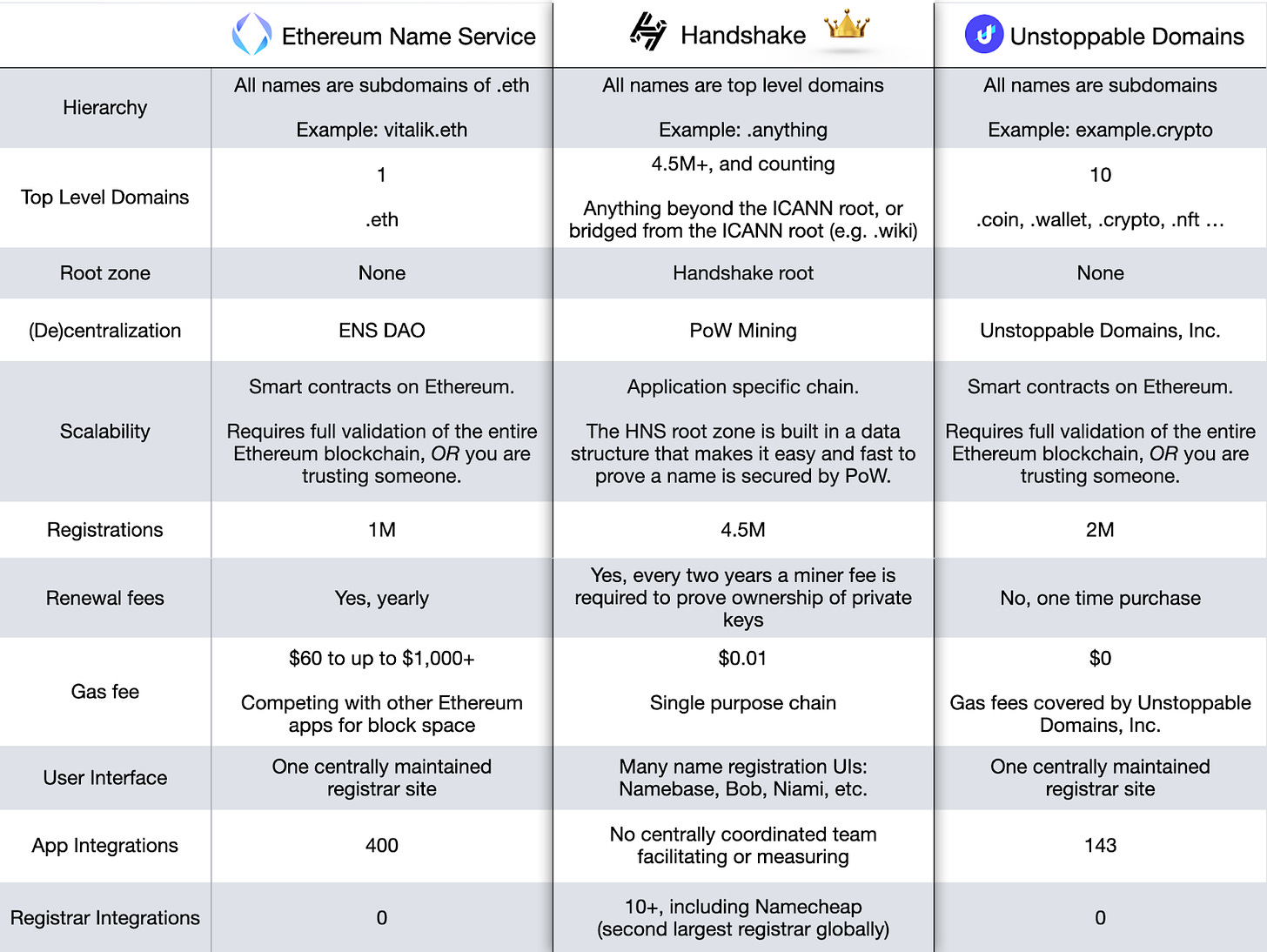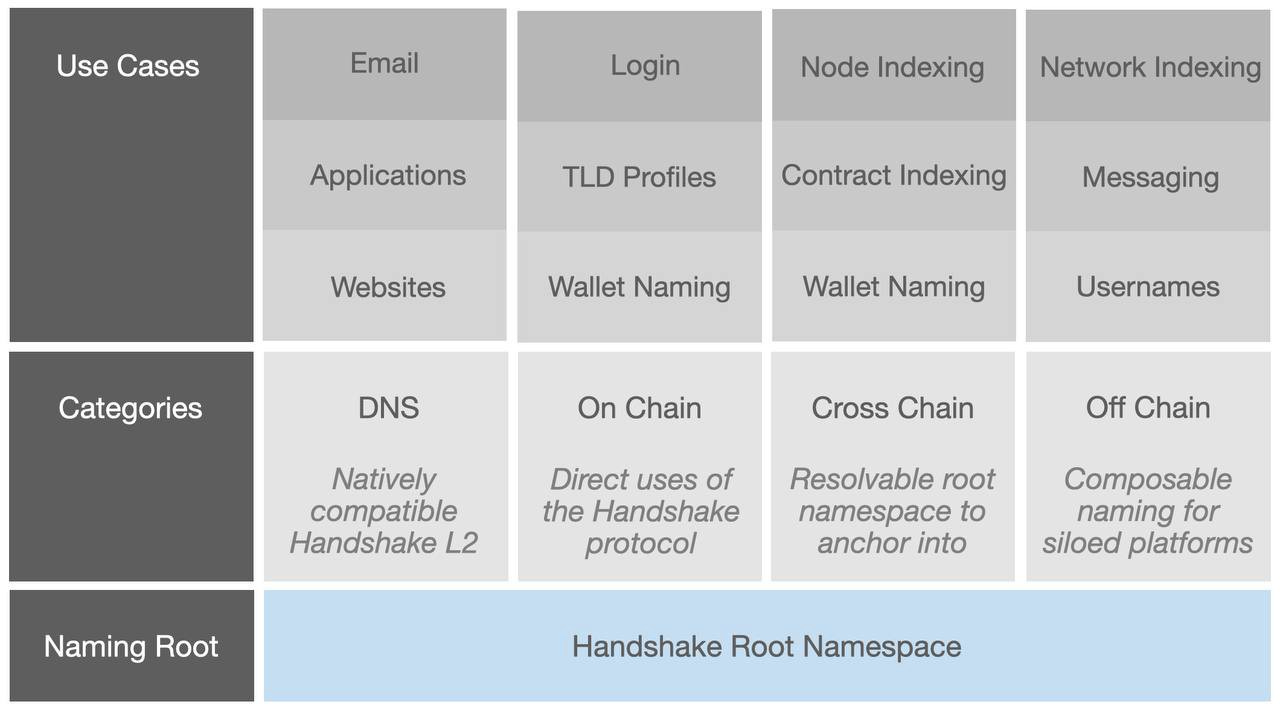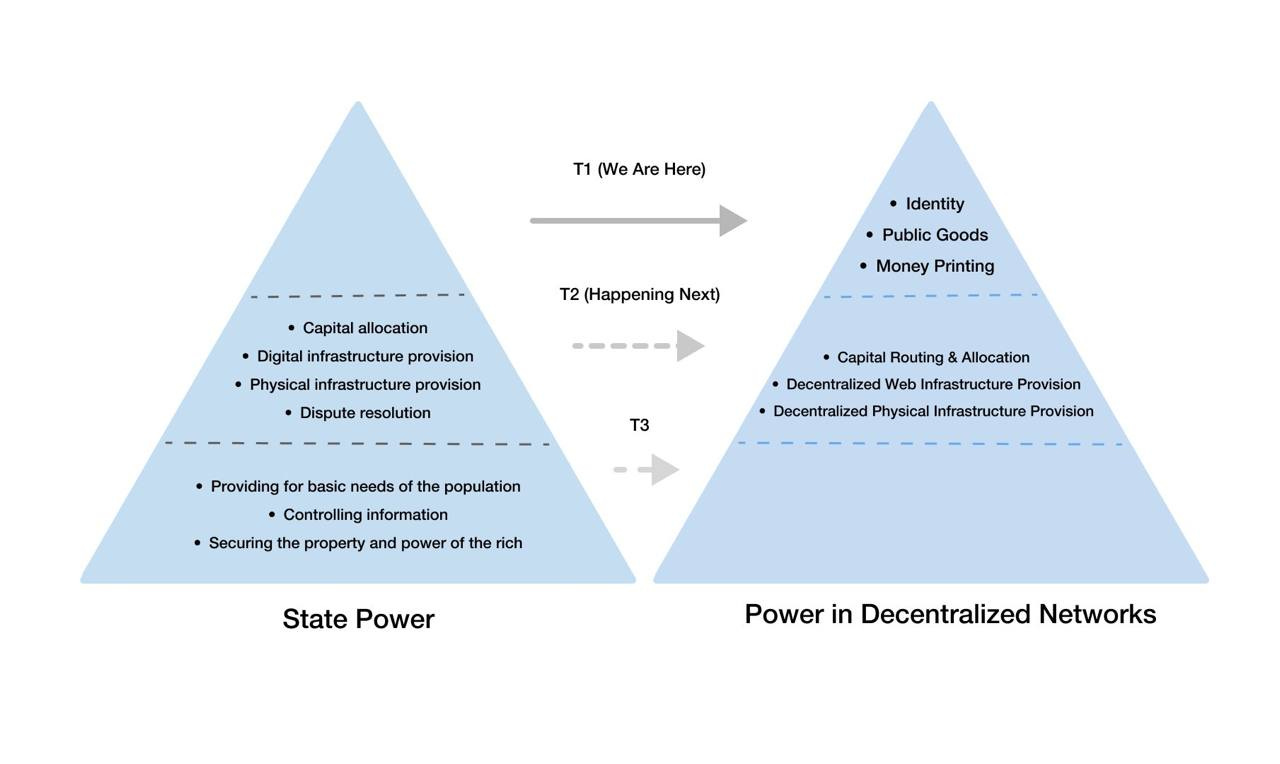BlockChannel: Solving the "Crypto Identity Problem"
Bootstrapping the New Internet with a Universal Anchor
By: Steven McKie (Amentum Capital) and Zach Brown (The Shake); this post was published on BlockChannel on May 6, 2022.
Enabling universal sign-ins and identity for crypto is a complex problem. We’ve seen over the last decade or so many various attempts, from Namecoin, to Ethereum’s ENS “domains”; and most recently and notably, the Handshake public blockchain, whose primary focus has been to co-opt and“softfork” ICANN’s traditional DNS root anchor into itself — thereby extending the existing internet into the decentralized web.
ICANN most recently made public a report published by their CTO, where he goes into decent depth to understand the emerging alternative namespace economy. You can see that report in its entirety here: https://t.co/LFYjy1KX3w.

What we’re seeing here is the educational penetration of what Handshake and alternative naming systems can offer. The ICANN report is akin to early bank analysts of Bitcoin in the early 2010s that grasped the superficial understanding of what Bitcoin could do, long before they truly understood the societal and financial implications as its adoption matured.
Though their report is somewhat thorough, they missed a few crucial points that truly differentiate Handshake from the rest of the offerings detailed. We’ll elucidate further below, so you can, in combination with the ICANN report above, see the full picture of what’s to come.
What Identity Chains/Naming Solutions Exist?

The above graphic is a useful top-down way to understand what is being offered by each service. The goal is to create a universally extendible root anchor, where your naming proofs exist intelligently architected at the root of the chain/service which is being secured.
This is of course most naturally done using PoW; and with the unique Urkel Tree for naming proofs custom built for Handshake, name inclusion is hashed and verified in an efficient manner, while providing the same functionality and flexibility as DNS with the rest of the blockchain’s construction.
On top of being a canonical reference for naming proofs, Handshake’s extensibility as an alternative root anchor to DNS gives it direct access to the largest applicable market possible for naming related use cases: the internet’s top-level domain (TLD) and second-level domain (SLD) ecosystem.
For clarity, when architecting a universal naming or identity solution, we must remember that:
Identity has value, and if architected correctly, can be money.
Identity is created through a chain of trust (whether family or cryptographic hash).
Identity is a canonical reference that is verifiable (i.e gov agency or cryptographic hash).
Identity is an intrinsic and portable alias for the self.
Identity is the version of self we put the most work & social capital behind.
Identity and Naming Solution Use Cases

Handshake is meant to assimilate to existing naming infrastructure as a DNS root anchor, rather than attempt migration to a new, untested system. Users can browse the internet like they always have, and resolvers can run the same software that they always have to follow the chain of domains and subdomains indicated by a URL.
The properties of a public blockchain extends the economic and social utility of a root anchor itself. With public wallet addresses, root names can directly hold and send coin balances — serving as both usernames and payment addresses, simultaneously. With public name records, root names can encode up to 512 bytes of social data directly in the Urkel tree. A block explorer or any system to query name records can display a chain of names as profiles with rich on-chain metadata (example: Niami.io).
“Crypto networks with hexadecimal addresses benefit from human readable names in the same way that computer networks with IP addresses do. “
Crypto networks, like computer networks, tend towards non-universality — or many networks. The chain-agnosticism of Handshake, as in-production bridges to Ethereum and Polygon highlight, is thus key to the scalability of crypto-based naming and identity.
A universal sign-in and identity system should be extensible in accounting for any on-chain and off-chain verification. Names in wallet addresses can use message signing to verify names on-chain, while names in DNS can use the well-established TXT-based standard for authenticating domains off-chain.
Identity and Naming System Design
Internet scale naming is complex and, practically speaking, must be able to run inside the average user’s mobile browser. To match the speed of DNS, and to do so in a trustless manner, requires SPV nodes. To do that, requires small proof sizes. Handshake’s unique design and applications calls for highly specific primitives, ones that are best implemented on a standalone chain.
Moreover, a single purpose blockchain avoids resource competition with non-naming applications vying for blockspace and social capital on a network. Ethereum is a notoriously hard to sync blockchain while a Handshake light client resolver can sync its chain of names in seconds. Handshake can grow and govern itself without interfering with the priorities of other applications running in parallel on the same network.
To accrue legitimacy as key internet infrastructure, the world has to trust that this naming system will exist in a stable state for a long time. Regulatory uncertainty of decentralized finance (DeFi) or social reception of non-fungible tokens (NFTs) can hinder the perception of a naming root if commingled on the same network. Protocol neutrality is best achieved on its own.
This is ultimately why one modular solution built on-top of an existing chain isn’t long-term viable, and thus doesn’t solve anything. However, other similar attempts do assist in creating useful naming APIs for various types of developers, which can each anchor into the HNS root itself. This construction provides utmost flexibility in creating the most modular and substitutable set of dependencies in your “decentralized web stack” (example of this in practice is HandyHost).
Understanding the functional differences between “Web3”, and what is and will become the drop-in protocol replacements for compute/storage/bandwidth from the “dweb”, must be widely educated. We also published a more recent post on how those components are maturing you can refer to.
The Internet Archive is also supporting similar ideals for this shift into the newly decentralized and open internet, and have outlined a set of principles to uphold and aspire to, as we work collectively not to repeat similar mistakes that led to the centralization of the Internet before.
Moving Decentralization Forward
We have a unique opportunity to reign in more power from centralized states into decentralized network effects that now extend beyond just money printing. Together and remaining aware of what components are mature for use now will allow us not to falter in that goal as we create a new public good system centered around portable (and provable) digital identities.

As these different economic structures emerge as a new form of digital identity and public good, we continue to disintermediate power away from potentially tyrannical state powers. While creating new types of checks and balances, we also allow for scalable fraud proofs for decentralized digital infrastructure provisioning and routing (such as with Akash, Sia, or Filecoin). And from there, the emergence of decentralized physical infrastructure, which can now become digitally addressable and auditable as a public good.
The construction of Handshake enables distinctly modular ecosystems and economies of scale to arise on-top of the chain as the root anchor. Each is a new opportunity to garner developer interest, and investor/speculator buy-in, creating sustainable community-oriented systems of exchange and value creation.
What we can see now effectively is outside “competitors” to Handshake aren’t really competing at all; but rather they are building the case for future Handshake related protocols and use cases that are identity-focused. And as the generalizable root anchor which is also a backwards compatible alternative to DNS — the only system poised to make it real.
Additional Handshake Reads:
The Case for Handshake (McKie, Amentum): https://medium.com/amentum/the-case-for-handshake-9b0af0d989fe
When the Internet Becomes Money (Brown, BlockChannel): https://medium.com/blockchannel/on-the-namespace-economy-98b5a93c2d03
The Decentralized Web (McKie, Amentum): https://www.coindesk.com/tech/2020/08/18/why-the-decentralized-webs-development-is-unstoppable/
Towards a New Internet (Brown, BlockChannel): https://medium.com/blockchannel/towards-a-new-internet-a53bf9e98d8a
Everything You Didn’t Know About Handshake (Chjango, Hackernoon): https://hackernoon.com/everything-you-didnt-know-about-the-handshake-naming-system-how-this-blockchain-project-will-483464309f33
